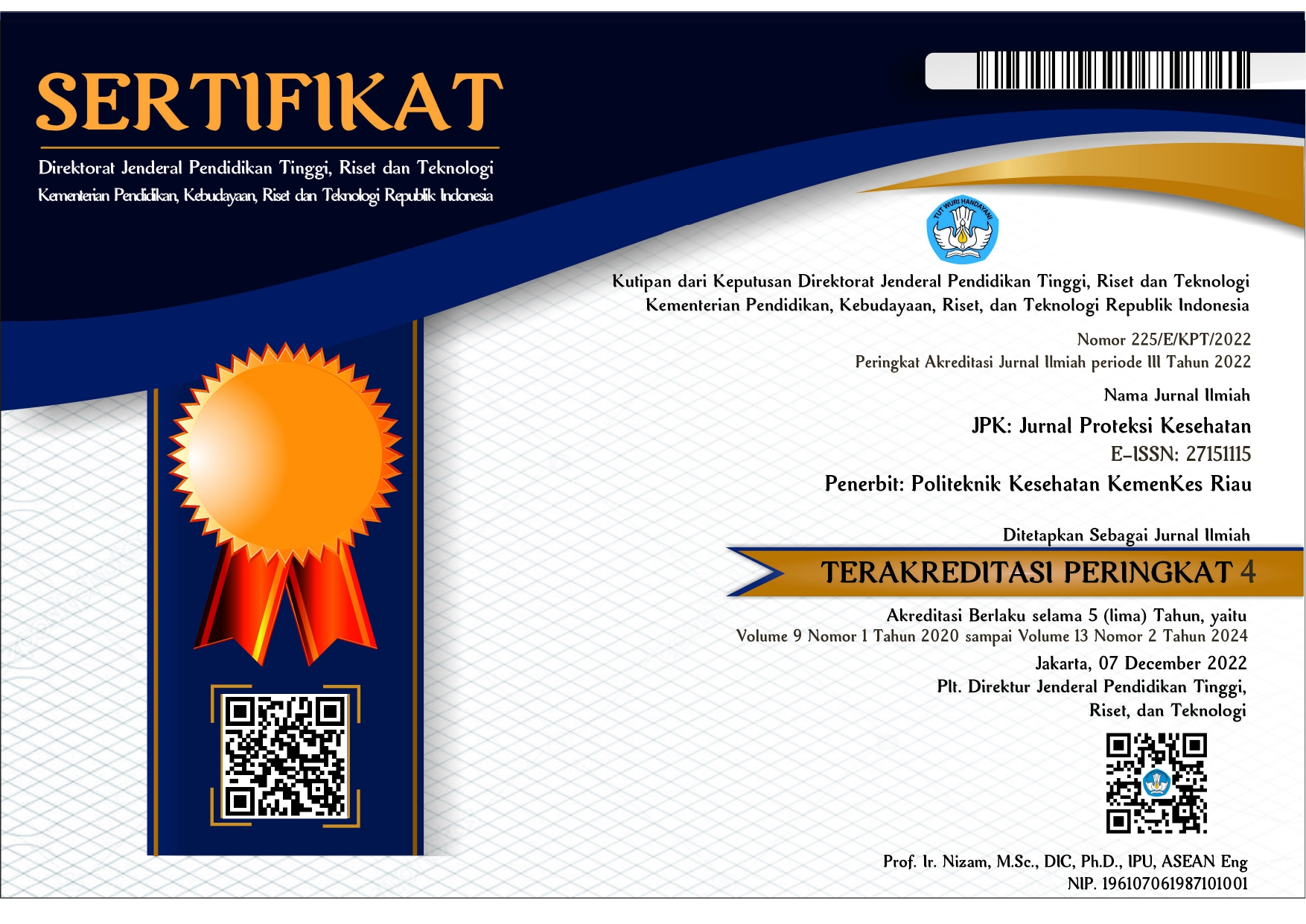Isolation and Identification of Endophytic Bacteria in Blimbing Wuluh (Averrhoa blimbii) Leaves that have potential as Lactic Acid Bacteria
Abstract
Lactic acid bacteria (LAB) are widely recognized for their numerous benefits. Apart from their medicinal properties, they can also serve as additional ingredient in food. Their high acidity is believed to be a plant's defense mechanism associated with endophytic microbes, which greatly benefit plant growth. Lactic acid bacteria (LAB) can offer advantages to humans and are widely distributed in nature. However, the collection of indigenous lactic acid remains limited, necessitating exploration of lactic acid from Indonesia's natural environment. This study aims to isolate and identify endophyt bacteria in the leaves of Averrhoa bilimbi (Blimbing wuluh) that potentially serve as sources of LAB. The research employed purposive sampling for sample collection and laboratory experiments. Results revealed that Blimbing wuluh leaves contain endophytic bacteria which have the potential to be lactic acid bacteria, with positive carbohydrate tests result to ferment lactose, sucrose, and glucose. The results of the Lactic Acid Bacteria test were positive on MRSB media and MRSA media. The results of the endophytic bacteria isolation characterization test succeeded in identifying 3 isolates from Blimbing wuluh (Averrhoa blimbii) which had the potential to be Lactic Acid Bacteria (LAB).
References
[2] P. A. C. D. Pendit, E. Zubaidah, and F. H. Sriherfyna, “Karakteristik Fisik-Kimia dan Aktivitas Antibakteri Ekstrak Daun Belimbing Wuluh (Averrhoa bilimbi L.),” J. Pangan dan Agroindustri, vol. 4, no. 1, pp. 400–409, 2016, [Online]. Available: https://jpa.ub.ac.id/index.php/jpa/article/view/342
[3] M. N. Fadel, E. Setyowati, Y. Trinovitawati, and W. Sabaan, “Uji Aktivitas Antibakteri Obat Kumur Ekstrak Daun Belimbing Wuluh (Averrhoa Bilimbi L.) Terhadap Bakteri Streptococcus mutans Penyebab Karies Gigi,” CERATA J. Ilmu Farm., vol. 12, no. 1, pp. 10–19, 2021, doi: 10.61902/cerata.v12i1.189.
[4] D. N. Nair and S. Padmavathy, “Impact of endophytic microorganisms on plants, environment and humans,” Sci. World J., vol. 2014, 2014, doi: 10.1155/2014/250693.
[5] M. Radji, “Peranan Bioteknologi Dan Mikroba Endofit Dalam Pengembangan Obat Herbal,” Maj. Ilmu Kefarmasian, vol. 2, no. 3, pp. 113–126, 2005, doi: 10.7454/psr.v2i3.3388.
[6] G. Strobel and B. Daisy, “Bioprospecting for Microbial Endophytes and Their Natural Products,” Microbiol. Mol. Biol. Rev., vol. 67, no. 4, pp. 491–502, 2003, doi: 10.2307/1592233.
[7] H. S. a and I. S. a, “Current limitations and challenges with lactic acid bacteria: a review,” Food Nutr. Sci., vol. 2013, no. November, pp. 73–87, 2013, [Online]. Available: http://file.scirp.org/Html/10-2700895_40133.htm
[8] M. Muzaifa, “IDENTIFIKASI BAKTERI ASAM LAKTAT INDIGENOUS DARI BELIMBING WULUH (Averrhoa bilimbi L.),” J. Sagu, vol. 13, no. 1, pp. 8–13, 2014, [Online]. Available: http://ejournal.unri.ac.id/index.php/JSG/article/view/2130
[9] H. Hamtini, W. Nurhati, M. Rahmita, C. Trisna, J. Rahmawati, and S. Shufiyani, “Isolasi dan Identifikasi Bakteri Endofit pada Batang dan Daun Tanaman Songgolangit (Tridax procumbens (Lour.)),” J. Med. Lab. Res., vol. 1, no. 1, pp. 19–22, 2022, doi: 10.36743/jomlr.v1i1.430.
[10] S. Syukur, Bioteknologi Dasar Dan Bakteri Asam Laktat Antimikrobial. Padang: Lembaga Pengembangan Teknologi Informasi dan Komunikasi (LPTIK) Universitas Andalas, 2016.
[11] M. Kanauchi, Lactic Acid Bacteria: Methods and Protocols by Makoto Kanauchi - PDF Drive. 1887. [Online]. Available: https://www.pdfdrive.com/lactic-acid-bacteria-methods-and-protocols-e187227566.html
[12] Romadhon, Subagiyo, and M. Sebastian, “Isolasi Dan Karakterisasi Bakteri Asam Laktat Dari Usus Udang Penghasil Bakteriosin Sebagai Agen Antibakteria Pada Produk-Produk Hasil Perikanan,” J. Saintek Perikan., vol. 8, no. 1, pp. 59–64, 2012.
[13] J. C. De Man, “MRS agar ( deMan , Rogosa , Sharpe ) | Principle | Preparation | Interpretation,” pp. 1–3.
[14] K. Khalid, “An overview of lactic acid bacteria,” Int. J. Biosci., vol. 1, no. 3, pp. 1–13, 2011.
[15] M. Kurnia, H. Amir, and D. Handayani, “Isolasi Dan Identifikasi Bakteri Asam Laktat Dari Makanan Tradisional Suku Rejang Di Provinsi Bengkulu: ‘Lemea,’” Alotrop, vol. 4, no. 1, pp. 25–32, 2020, doi: 10.33369/atp.v4i1.13705.
[16] A. Ibrahim, F. Delvia, and A. Fridayanti, “Isolasi Dan Identifikasi Bakteri Asam Laktat (Bal) Dari Buah Mangga (Mangifera indica L.),” vol. 1, no. 2, pp. 114–120, 2015, doi: 10.25026/mpc.v1i1.16.
[17] M. P. Mokoena, “Lactic acid bacteria and their bacteriocins: Classification, biosynthesis and applications against uropathogens: A mini-review,” Molecules, vol. 22, no. 8, 2017, doi: 10.3390/molecules22081255.
[18] G. F. Brooks, K. C. Carroll, J. Butel, S. A. Morse, and T. Mietzner, Medical Microbiology. 2013. doi: 10.1017/CBO9781107415324.004.
[19] I. Surono, S, Probiotik, mikrobiome dan pangan fungsional, 1st ed., vol. 1, no. 1. Yogyakarta: Deepublish, 2016. doi: 10.25134/quagga.v10i01.803.
[20] G. Fallo et al., “Isolasi dan karakterisasi Bakteri Asam Laktat pada air rendaman kacang tunggak (Vigna unguiculata (L.) Walp) berpotensi sebagai penghasil antibiotik,” J. Pendidik. Biol. Undiksha, vol. 8, no. 3, pp. 161–170, 2021.
[21] R. Siddique and A. Gul, Plant-Microbe Interactions. 2021. doi: 10.1201/9781003106784-1.
[22] R. D. Ayivi et al., “Lactic Acid Bacteria: Food Safety and Human Health Applications,” Dairy, vol. 1, no. 3, pp. 202–232, 2020, doi: 10.3390/dairy1030015.












